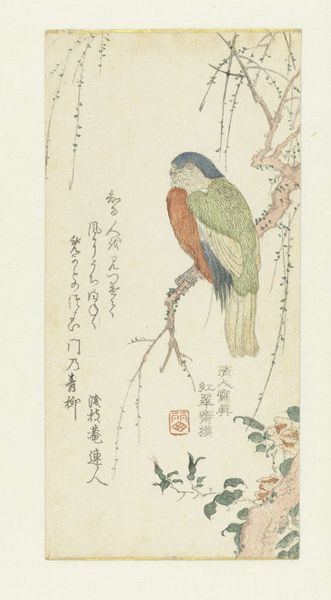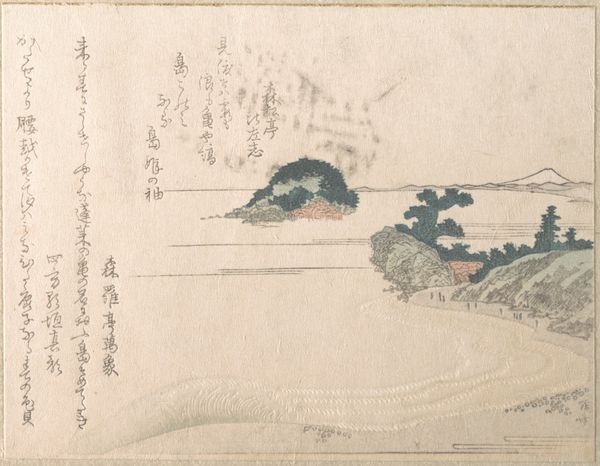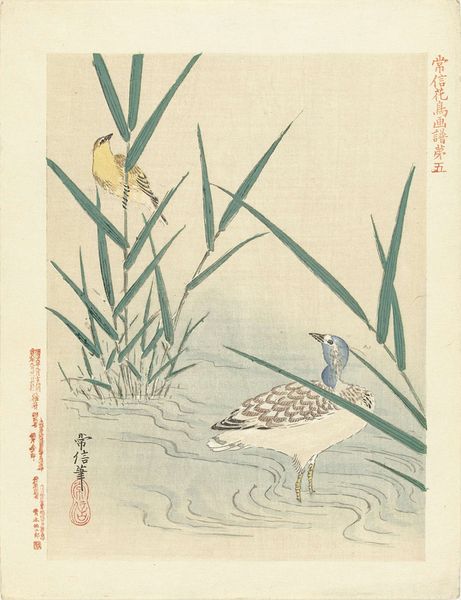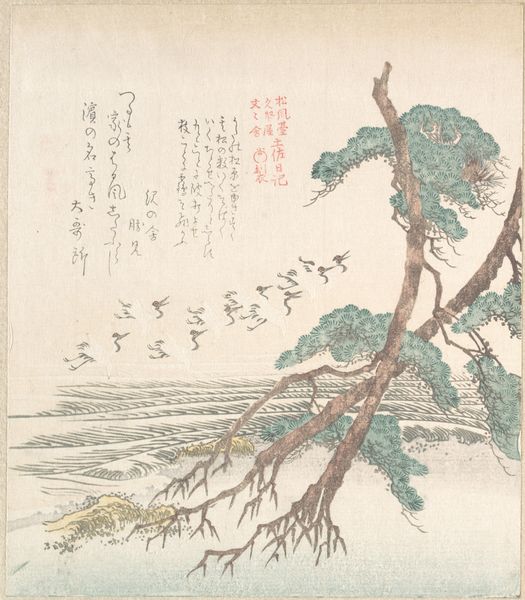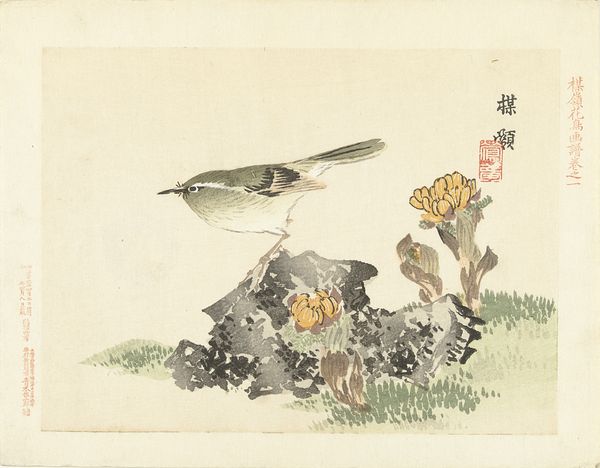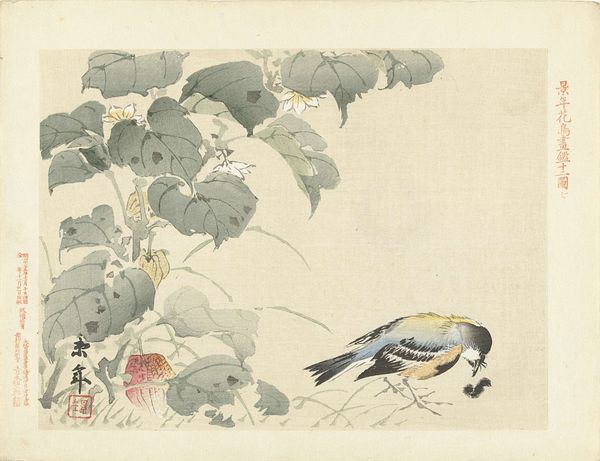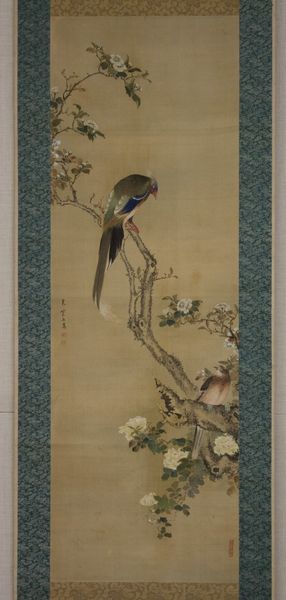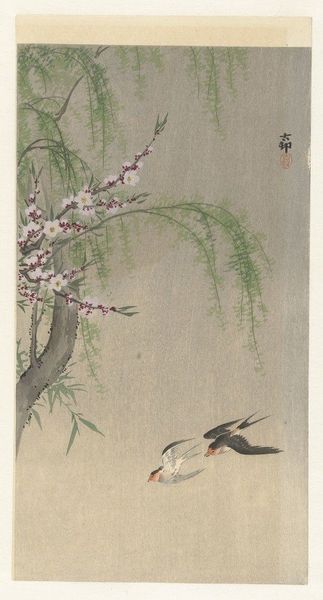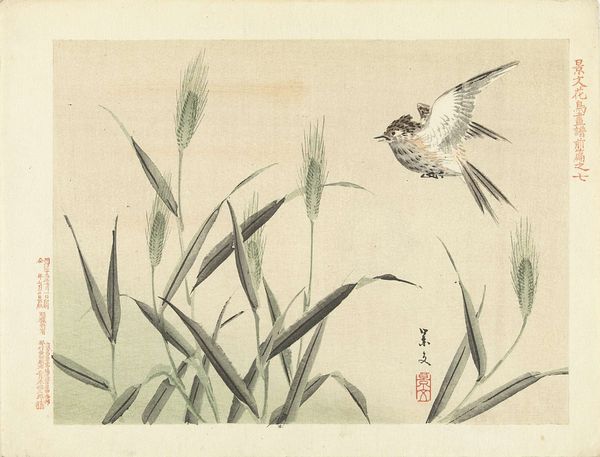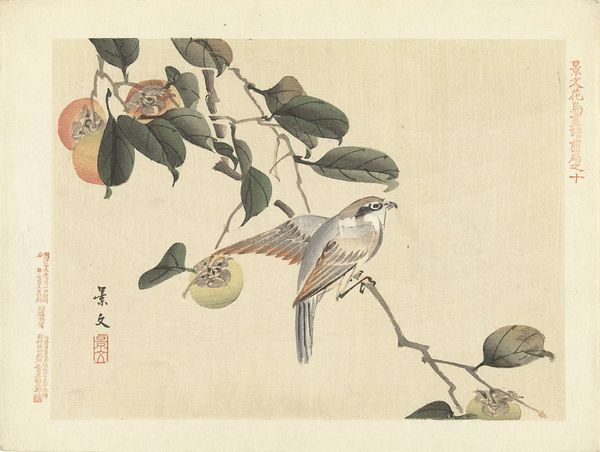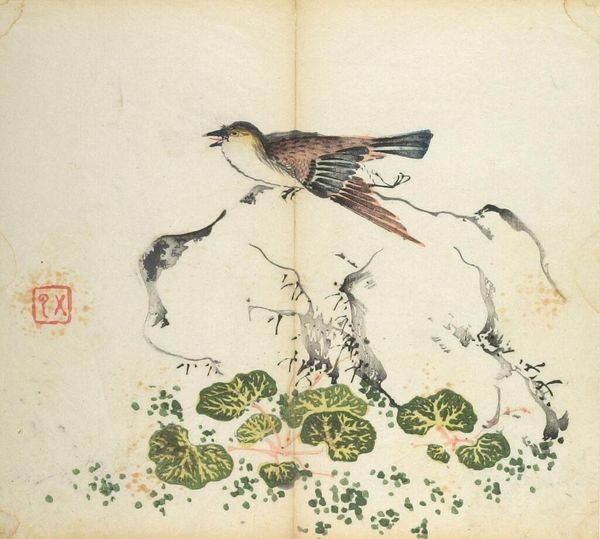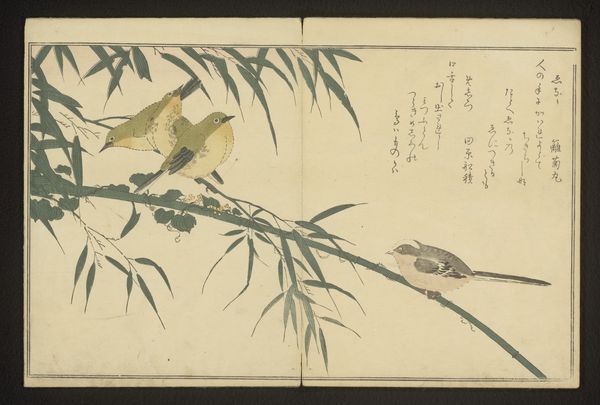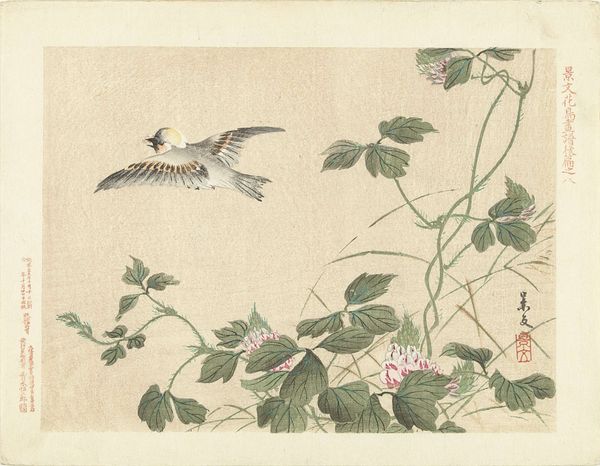
Dimensions: height 272 mm, width 209 mm
Copyright: Rijks Museum: Open Domain
Curator: Here we have "IJsvogel kijkend naar vogel bij water" created between 1893 and 1899, which translates to "Kingfisher watching bird at water", a watercolor painting by Kano Tsunenobu. It is classified as ukiyo-e and shows a scene with two birds near water. Editor: Ah, what a serene and quiet painting. I am instantly struck by the muted colors and the delicate, almost hesitant lines. The whole scene seems suspended in a moment of still contemplation. Curator: Indeed. This piece exists within a longer tradition of Japanese nature painting and specifically bird-and-flower painting known as kachōga. These paintings, very popular at the time, weren't just about pretty pictures. They often reflected deeper philosophical ideas about harmony, balance, and the interconnectedness of nature and humanity. Editor: I can see that. It's like the birds aren't just *there*. They're characters in a carefully staged drama. One almost expects them to start conversing in haiku. The artist is obviously using negative space in very deliberate way to give that tranquil feeling. Curator: Absolutely. The empty space, or "ma," is just as important as the depicted elements. It encourages the viewer to slow down, to contemplate the scene, to become a part of it, really reflecting Buddhist and Shinto influences, promoting meditation and quietude. The painting also shows some important aspects of Edo-period art, specifically how Kano School artists integrated traditional styles with a bit more realism and natural observation. Editor: The execution itself seems very intentional, particularly the water’s reflections and the posture of the upper bird poised to hunt in the water below. There's a narrative tension, that suspended moment right before the action happens, the moment before the hunt. That pre-hunt pause evokes this amazing quiet that feels both charged and gentle. Curator: It definitely creates an invitation. Viewing artwork such as this gives great insight to understanding the societal and artistic context of late 19th century Japan, which balances tradition with outside influences and evolving aesthetic ideals. Editor: Well, I see the influence of that traditional artistic language as very moving and suggestive, even today, with its ability to capture that liminal moment between seeing and doing. I think I need to carry this quiet awareness with me today. Curator: It certainly offers a different perspective on observation.
Comments
No comments
Be the first to comment and join the conversation on the ultimate creative platform.
